If you want to add new plants to your garden, be sure to avoid any poisonous plants, no matter how common, beautiful, or exotic as they are. Read on to discover some of the most toxic plants out there.
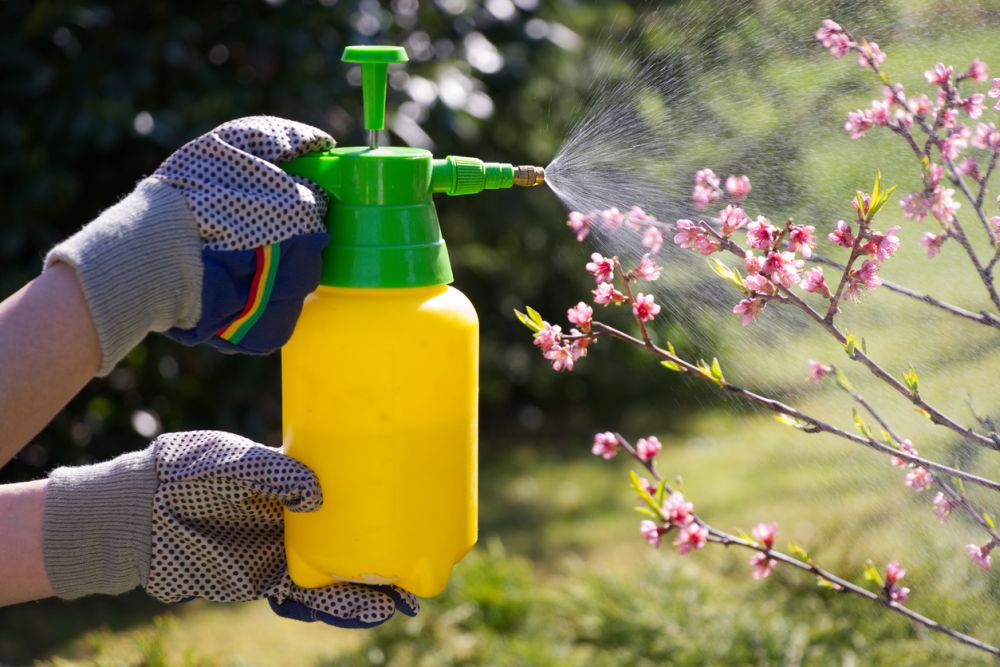
There are many poisonous plants that can be harmful when ingested or even touched. If you have children or pets, it’s important to be aware of these deadly plants and avoid growing them in your garden.
Here is a list of some of the most toxic plants to watch out for and keep your family safe. Remember that this list is by no means exhaustive, so be sure to do your own research before planting anything in your garden.
Table of Contents
Let’s start by understanding how plants can harm humans and animals.
How Plants Poison Humans and Animals
It’s possible for adults, children, and animals to show poisoning symptoms without ingesting a part of the toxic plant.
Poisonous plants typically use their toxicity as a defense mechanism, to prevent wildlife from eating their leaves or flowers. In some cases, though, these deadly pants use their toxicity as a weapon to capture their prey and feed on them.
Here are some ways in which plants can poison people and pets:
- Eat or touch the leaves of the plant.
- Ingest the fruits or berries of the plants.
- Touch the roots of the plant with your unprotected hands.
- Get in contact with the juices or sap of the plant.
- Pets drink water from the tray under the pot.
- Dogs sample the soil close to the plant’s roots.
In the next section, check out some basic symptoms of plant poisoning.
Symptoms of Plant Poisoning
The severity of poisoning symptoms depends on the species and maturity of the deadly plant. Certain young plants don’t have high toxin concentrations developed yet. And mature plants are significantly more toxic.
Minor plant poisoning symptoms include thirst and skin rash. Meanwhile, major plant poisoning symptoms include breathing difficulties, vomiting, and even death.
Seek medical help immediately at the first signs of poisoning.
In the next section, check out the list of poisonous plants to watch out for.
7 Poisonous Plants to Avoid Growing in Your Garden
There are too many deadly and obnoxious plants to list in this article. So we’re focusing on 7 common and exotic plants to avoid growing in your garden: Wolf’s Bane, Castor Oil Plant, Dracula’s Flower, Nepenthes Pitcher Plant, Deadly Love Bean, Corpse Plant, and Oleander.
Let’s start with Wolf’s Bane.
1. Wolf’s Bane
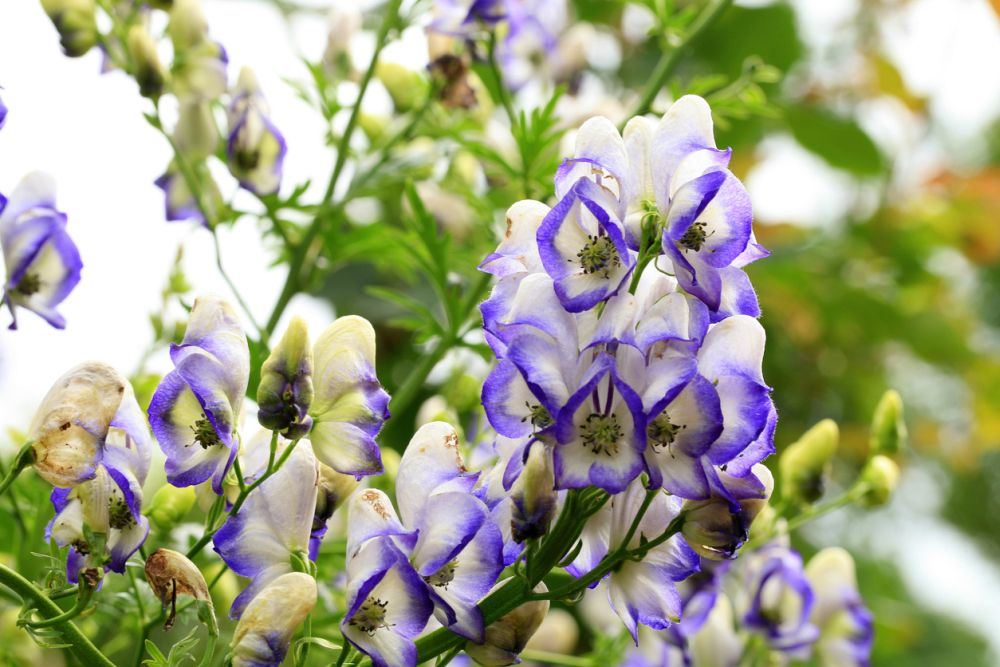
Wolf’s Bane (Aconitum) is one of the most poisonous plants for humans and pets. It’s also known as Devil’s Helmet, Dogbane, Tiger’s Bane, Mouse Bane, Women’s Bane, and Leopard’s Bane.
Here’s what you need to know about Wolf’s Bane:
- Wolf’s Bane is a member of the Buttercup family.
- In the Middle Ages, Wolf’s Bane was commonly known as Mourning Widow.
- The flowers of Wolf’s Bane have cute, velvety petals that look like a pointy bonnet.
- The petals of Wolf’s Bane are flowers and attract pollinators.
- Wolf’s Bane has deadly roots – only a few drops of their juices can send a medium-sized animal into cardiac arrest.
- Taken in small doses, the toxic liquid coming from Wolf’s Bane can cause irregular heart palpitations, leading to lightheadedness and mild dizziness.
In the next section, learn about Ricinus.
2. Castor Oil Plant
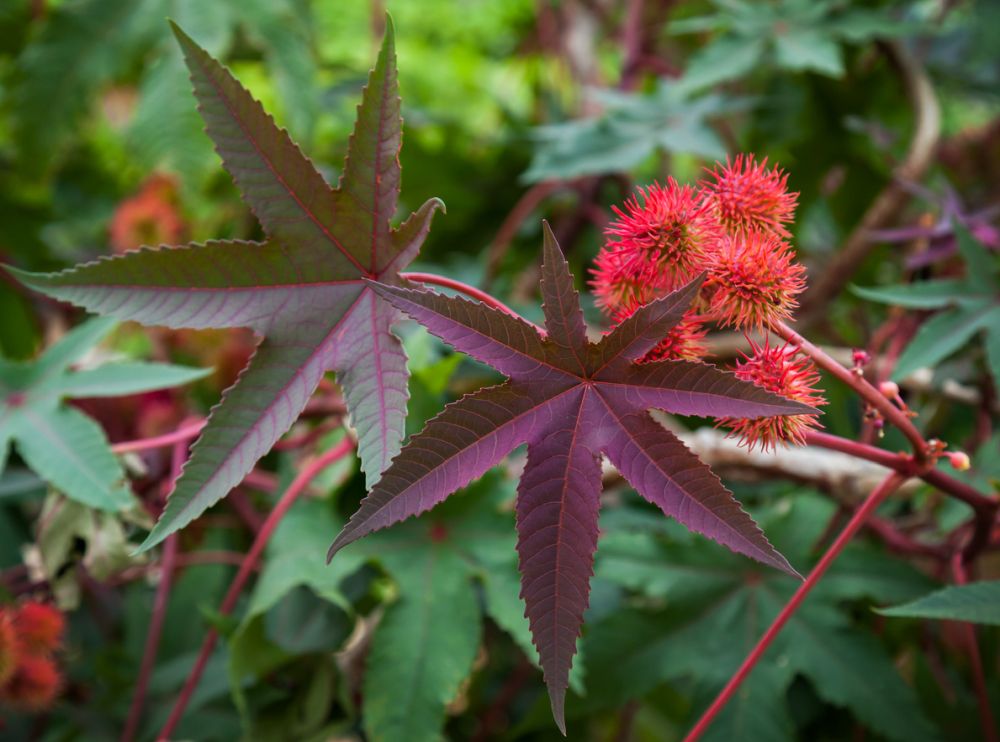
Castor Oil Plant (Ricinus communis) is a poisonous plant that you should avoid growing in your garden. It’s also known as Ricinus or Castor Bean. According to , it’s the deadliest common plant.
Some people mistakenly refer to the Castor Oil Plant as Ricin, but that’s incorrect – the plant’s seed is called ricin.
Here’s what you need to know about Ricinus:
- Ricinus is a member of the spurge family (Euphorbiaceae).
- The seed of Ricinus is called the castor bean, which is the source of castor oil.
- Ricinus contains ricin, which is extremely allergenic and triggers asthma. In fact, Ricinus allergies are very common.
- The sap of the Ricinus plant causes skin rashes. And, if you’re allergic to Ricinus, you can get skin rashes from just touching the flowers, leaves, or seeds of the plant.
- Ricin poisoning is fatal, although it takes a large dose (4-8 seeds of Ricinus).
- Symptoms of ricin poisoning include nausea, vomiting, convulsions, liver failure, and death.
- Castor oil is used in making soaps, lubricants, and perfumes, in hair and skin care, in traditional medicine, as biodiesel, and so on. Castor oil is safe because ricin is eliminated through heat when extracting the castor oil.
In the next section, check out Dracula’s Flower.
3. Dracula’s Flower
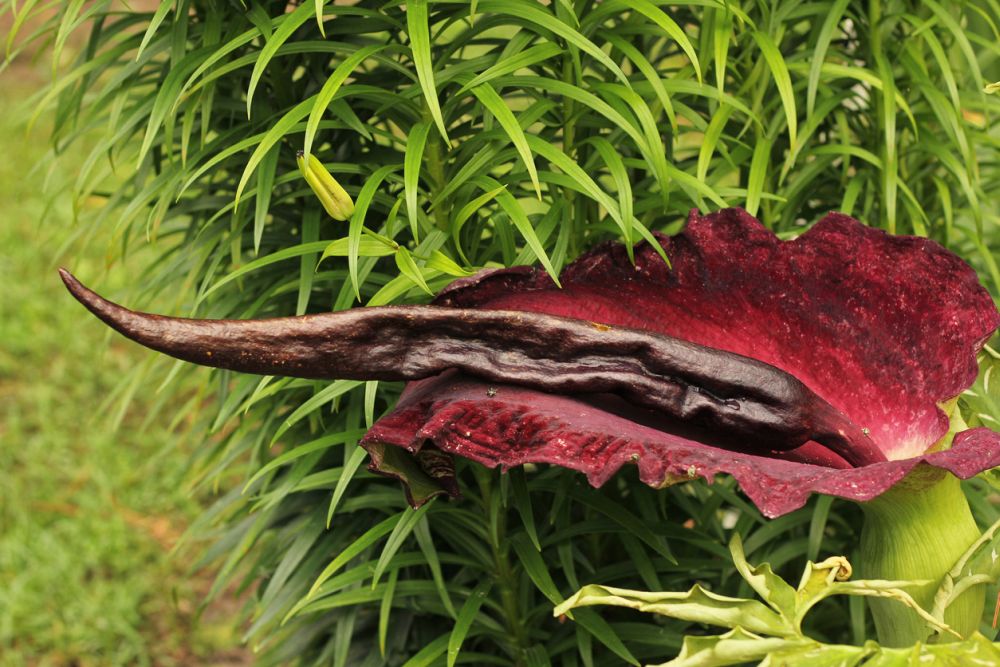
Dracula’s Flower (Dracunculus vulgaris) is a poisonous plant with an interesting appearance. It’s also known as common dracunculus, dragon lily, dragon arum, black arum, vampire lily, and drakondia.
Here’s what you need to know about Dracula’s Flower:
- Dragon lily is a member of the Araceae family.
- The plant has a 4-foot spike that shoots out of the middle of a burgundy flower.
- The petals of the vampire lily resemble the cape of Count Dracula, the Transylvanian noble
- It has a rotten flesh smell to attract flies as pollinators.
- Dracula’s flower can heal itself at 64 degrees F (18 degrees C).
- All parts of the dragon arum are poisonous to animals and humans, causing skin rash by touch. However, animals stay away from the plant due to its foul smell.
- The fruits and seeds of Dracula’s flower are used in Turkey to treat rheumatism and hemorrhoids.
In the next section, check out Nepenthes Truncata.
4. Nepenthes Pitcher Plant
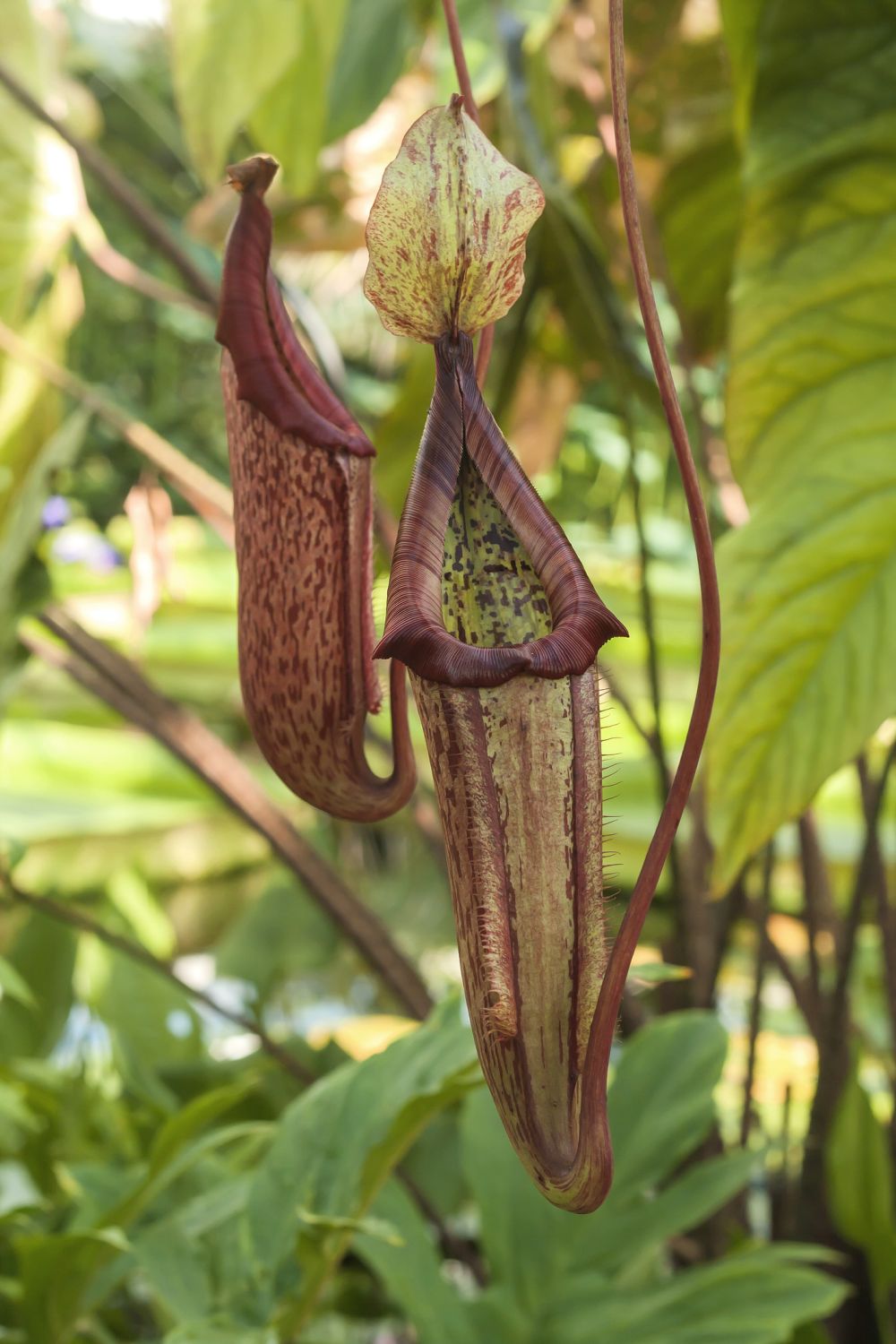
Nepenthes Pitcher Plant (Nepenthes Truncata) is a poisonous, carnivorous, and one of the largest tropical pitcher plants.
Here’s what you need to know about Nepenthes Truncata:
- The plant is a member of the Nepenthaceae family.
- Nepenthes Pitcher Plant has heart-shaped leaves and huge, green, cylindrical pitchers with red or red-striped peristomes.
- The pitchers can grow up to 15.7 in (40 cm) high.
- Although not dangerous to humans, Nepenthes Truncata is a serious threat to small animals, such as mice, rats, and lizards.
In the next section, read about Deadly Love Bean.
5. Deadly Love Bean
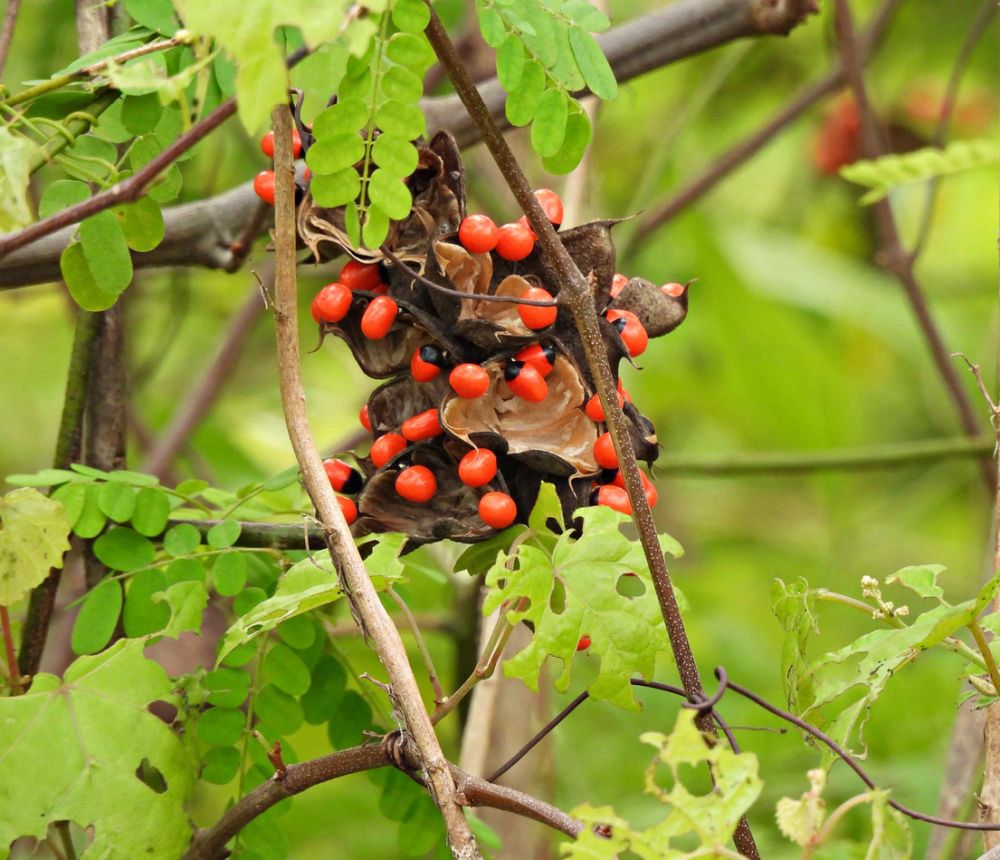
Deadly Love Bean (Abrus precatorius) is a poisonous plant for adults and children. It’s also known as jequirity bean, rosary pea, crab’s eye, paternoster pea, love pea, and other names.
Here’s what you need to know about the Deadly Love Bean:
- The plant is a member of the Fabaceae family.
- Rosary pea is a slim climbing plant that wraps itself around hedges, shrubs, and trees.
- The plant has a flat seedpod which represents its fruit. When it opens, the seedpod curls back to expose its seeds.
- Seeds are prized for their ornamental value since they look like ladybugs (black and red). As such, rosary pea seeds are used in jewelry-making.
- Deadly Love Bean is used in traditional medicine to treat wounds, scratches, sores, coughs, diarrhea, and dysentery.
- If the seed coat of the jequirity bean cracks, it exposes abrin. Abrin is highly poisonous to adults and children. If chewed and ingested, a seed can cause blindness or even death. Ingested intact seeds pose no threats since they have a very hard shell that’s impossible to crack by the gastrointestinal tract.
- The symptoms of abrin poisoning are identical to ricin poisoning, but abrin is almost twice as toxic.
- Growing the rosary pea in your garden is particularly dangerous since the plant is invasive and spreads quickly like a weed.
In the next section, get informed about Corpse Plant.
6. Corpse Plant

Corpse Plant (Amorphophallus titanum) is a poisonous plant and the largest unbranched inflorescence (cluster of flowers) in the world. It’s also known as titan arum or corpse flower.
Here’s what you need to know about the Corpse Plant:
- A. titanum is a member of the Araceae family.
- The plant can live up to 40 years and grow up to 3 meters (10 feet) tall.
- Corpse Plant creates rarely creates a single leaf (once every few years), which lives for about a year before becoming dormant.
- The inflorescense of the titan arum has a spade and spadix, so there are no petals.
- Corpse Plant has a rotten flesh smell that attracts pollinators: sweat bees, flies, and carrion beetles.
- Humans can boil and eat the modified stem and leaf stalks of the Corpse Plant.
- The plant is toxic to humans and animals if it’s prepared incorrectly. That’s because A. titanum contains calcium oxalate crystals to deter herbivores.
In the next section, find out more about Oleander.
7. Oleander

Oleander (Nerium oleander) is a poisonous plant. It’s actually a shrub or a small tree, also known as nerium.
Here’s what you need to know about the oleander:
- N. oleander is a member of the Apocynaceae family.
- The tree grows 7 – 20 ft (2 – 6 m) tall.
- It produces five-lobed flowers in clusters year-long, which are pink, white, or red.
- Oleander contains several toxic compounds, such as oleandrin and oleandrigenin.
- The plant has a very bitter taste, so it’s not appetizing for humans or animals.
- Symptoms of major oleander ingestion include nausea, excess salivation, abdominal pain, vomiting, bloody diarrhea, and irregular heart rhythm. Touching the sap for a long time can lead to skin rash, eye inflammation, and dermatitis.
In the next section, learn more information about poisonous plants.
FAQ
This section gives you simple answers to common questions about poisonous plants.
What plants are poisonous to dogs?
There are many plants that are poisonous to dogs, including Sago palms, Lilies, Azaleas, Oleander, Rhododendron, Tulips, Chrysanthemums, Cyclamen, Kalanchoe, Alocasia, and Dieffenbachia.
Are snake plants poisonous to cats?
Yes, . These plants contain, which cause nausea, vomiting, and diarrhea in cats.
What does the poison ivy plant look like?
Poison ivy plants can vary in appearance, but they typically have three glossy green leaves, each divided into three smaller leaflets. The plants may also produce small white or greenish flowers, and berries that range in color from white to yellowish-orange.
The next and final section summarizes the entire article on poisonous plants.
Conclusion
While it’s important to be aware of these poisonous plants, you shouldn’t let this information scare you away from gardening altogether. With a little bit of knowledge and vigilance, you can enjoy your hobby without putting your family or pets in danger.
Have you ever had a run-in with a poisonous plant? Let us know in the comments below.
The post appeared first on .





























